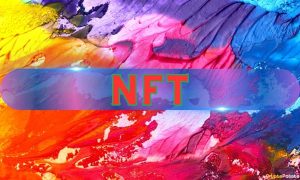5 Bullish and 2 Bearish Cases for DeFi Going Into 2023 (Opinion)

[ad_1]
The DeFi world, along with the rest of the cryptoverse, is still in the grip of fear and dread. 2022’s crypto winter continues with no clear end on the horizon. With still no sight of a near-term market bottom forming, some investors have even taken to wondering if DeFi is dead on arrival altogether.
But there are some inspiring data about the health and usage of the most prominent DeFi ecosystems today. The winners will go on to keep playing through the next big crypto rally. They give crypto investors, developers, and entrepreneurs alike great hope for the future of decentralized finance.
As goes the price of Bitcoin, so goes the price of the rest of the cryptocurrencies on the market. So the falling price of all the major DeFi altcoins out there in 2022 was more about correcting the BTC bubble at the end of 2021. The price winter this past year doesn’t mean there’s no future for decentralized finance.
Although DeFi blockchains have seen the price of their market-traded cryptocurrencies drastically discounted in 2022, the engines they run on are incredibly powerful. As time goes on, they are only going to become more powerful, with more advanced feature upgrades like enhanced security and total privacy with liquid keys and zero-knowledge proofs.
The Longterm Bull and Bear Cases for DeFi
Overall the future of decentralized finance is bullish for five reasons and bearish for two.
It’s bullish because:
1) Centralized finance’s woes in 2022 make a strong case for DeFi.2) The major DeFi cryptos have strong fundamental indicators.3) The tech and security development is happening super fast.4) Corporate incumbents continue to make DeFi integrations.5) Institutional investors are circling the waters to invest in DeFi coins.
It’s bearish because:
1) The state of the carnage in DeFi prices and some platforms is still real. Investors are burnt, and many are left wary. It’ll be an uphill climb to earn trust as reliability and reputation improve.2) The potential of regulatory threats and dangers to DeFi investments and business models still looms over the field of decentralized finance as it does the rest of cryptocurrency.
Let’s dive right in!
Bearish: The State of The Carnage in Decentralized Finance
Decentralized finance has had its market cap slashed mercilessly over the last year, along with the rest of the industry. That’s an understandable reason to remain bearish about DeFi-related cryptocurrencies in the near term. Especially with no technical indicators signaling a market bottom soon for coins like Ethereum (ETH), BNB Coin (BNB), Uniswap (UNI), Polkadot (DOT), and Solana (SOL).
Ethereum, over the course of 2022, experienced a staggering 76% drop in TVL (total value locked) in DeFi protocols. The total value of all cryptocurrencies locked to stake, lend, or put up as collateral on decentralized finance apps stood at $95 billion in January to start off 2022. By year’s end, it had declined to some $23 billion.
That figure is calculated, of course, using the fair value or fair price approach, given the average market price of the cryptocurrency on liquid exchange markets for crypto on the date for which the measurements are taken to determine the TVL.
Crypto prices all crashed along with the Bitcoin price in 2022. So, a lot of that significant decline in TVL is simply a matter of the Bitcoin and Ether market cap sliding into buyer’s territory. It’s not all as bad as capital flight from the Ethereum platform– people taking their locked cryptocurrency at the expiry of the contract and leaving with it.
Bearish: Regulatory Threats
Regulators across, especially in the US, are making rounds with the entire cryptocurrency industry, and DeFi is no exception. This becomes increasingly so after a multitude of protocols, bridges, and even non-fungible token (NFT) platforms were exploited, resulting in hundreds of millions stolen or compromised.
One landmark case that’s going on, albeit not in the US, is against Tornado Cash developer Alexey Pertsev. Dutch authorities recently extended his sentence, and he will remain in prison until February 20, 2023.
The entire crypto community seemingly stands in defense of the developer, with many arguing that Tornado Cash is simply a privacy platform and developers shouldn’t be liable for the way some people choose to use it.
At the same time, it’s becoming increasingly clear that regulators across the world are taking aim at the nascent field of Decentralized Finance. The US Securities and Exchange Commission has slammed many teams with charges of selling unregistered securities, and it appears that the crackdown is just getting started.
Bullish: CeFi Crash Highlight DeFi Benefits
One reason to be bearish about decentralized finance is serious concerns regarding its level of security from cyberattacks. Defi apps have suffered the brunt of losses to hacks in 2022.
Because there is no central oversight desk, no accounting department that can make an adjustment to fix something that went wrong on your account, because DeFi is a place where code is the law and whatever is possible through the code is possible through the code – hackers love targeting decentralized finance apps and users.
At the same time, this has created a natural stance in the space of fierce cybersecurity that has served platforms that have not suffered from any major hacks or technical setbacks well.
And even if DeFi is a tough testing ground for the most resilient distributed cryptographic network techniques, it is looking pretty good in 2023 after the amount of trouble centralized finance got into last year.
To wit:
The FTX exchange, at one time the third largest crypto exchange in the world, crashed and burned along with its FTT token and Alameda Research trading arm.
There went Voyager Digital with it, which FTX had bailed out for $200 million prior to its own collapse.
Those were just some of the centralized finance collapses in 2022, with Celsius and the CEL token ($4.7 billion insolvency problem), Three Arrows Capital ($10 billion in AUM and $700 million default), and BlockFi’s bankruptcy (liabilities “Between $1 Billion and $10 Billion”).
That will fuel plenty of demand in the future for developments that are resilient to the forces of human excess and remain growing, stable, autonomously operative, working solutions on blockchain ecosystems.
Bullish: Strong Fundamentals for DeFi Crypto Platforms
The fundamental business model of the DeFi sector on cryptocurrency platforms is useful and profitable. It provides a wide open space for the development of web3 techniques and applications, a new frontier of the Internet, which after publishing and communications, is in its financial stage of development.
The number of DeFi users (as extrapolated from wallet addresses) increased rapidly from 2019 through Q2 of 2022.
That’s very healthy usage. Now the number of new wallet addresses being created for DeFi applications slowed in the second half of 2022, but that is entirely attributable to the crypto winter. While this one isn’t over yet, just like past crypto winters, it will eventually thaw out.
According to DappRadar data, the total value locked in DeFi smart contracts was $40 billion in late November, with crypto reeling from the Alameda-FTX exchange crisis. That figure is sure to swell along with crypto prices whenever there’s a rally. That’s what investors with their money parked that way are counting on.
Bullish: Better Security and Privacy
Another reason to be bullish about the future prospects of the DeFi industry is the quality of its products and the rapid pace of improvements to advance those products’ essential value propositions to their addressable markets.
Take Uniswap, for example, the decentralized exchange that has managed to hold 50% of DEX exchange volume consistently over the last year. It’s an always-on, always working, always working the same way, 24/7, crypto financial services vending machine.
The smoothness of its operation and its avoidance of any hacks or scandals have kept it floating along just fine through this turbulent period of crypto winter. The protocol’s independent, distributed, immutable solutions, deployable across the Ethereum ecosystem, have earned the DEX and the team behind its development accolades and a reputation as one of the strongest brands in crypto.
Meanwhile, DeFi cryptocurrency’s products are only getting better at an accelerating pace. Teams are scrambling to develop the latest solutions in a race for users, market share, and capitalization. Products are improving at a remarkable rate.
Some of the cutting-edge developments in crypto technology with abundant use cases in the DeFi sector include better security and privacy with secure multi-party computational or “liquid” private keys and more zero-knowledge proof implementation in cryptographic authentication, authorization, and accounting.
DeFi will also continue to boast an enormous productive output over the following years in Layer 2 scaling and interoperability. We’re already seeing the importance of that trend with the turn of the new year when Lido Finance overtook MakerDAO in TVL because of its liquid Ethereum staking solution.
Bullish: Corporate Incumbents Making DeFi Integrations
But another good reason to be bullish about DeFi’s future is the number of corporate incumbents that have already made DeFi integrations to their products and systems for their customers.
For instance, MakerDAO has partnered with banks to provide decentralized finance loans with RWA (real-world asset) backed collateral on the blockchain. When MakerDAO announced this, it was the first time in business history that there was “commercial loan participation between a U.S. Regulated Financial Institution and a decentralized digital currency.”
Smart contracts on reliably cryptographically secure distributed networks hold special appeal for the traditional finance industry. Use cases include error-free insurance claim processing, transparent auditing, real-time remission and settlement, versatile tokenization of new financial products, accurate contracts, and streamlined KYC compliance that customers will like better than methods working within the constraints of tradfi technology.
Bullish: Institutional Investors Eyeing Decentralized Finance
Institutional investors are also circling in wait, ready to make investments amounting to massive capital inflows for cryptocurrencies that power decentralized finance ecosystems. Investors in these tokens and currencies will notice the buoyancy in exchange markets for their major layer one DeFi cryptocurrencies when that happens.
Binance Free $100 (Exclusive): Use this link to register and receive $100 free and 10% off fees on Binance Futures first month (terms).
PrimeXBT Special Offer: Use this link to register & enter POTATO50 code to receive up to $7,000 on your deposits.
[ad_2]
Source link









